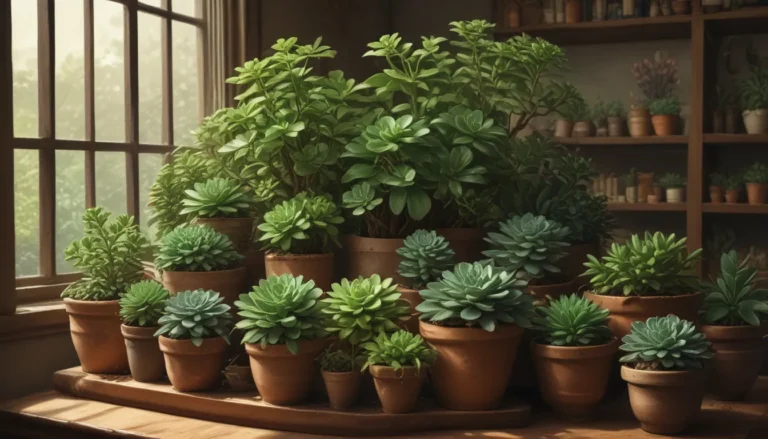The Complete Guide to Growing and Caring for Baby’s Breath Flowers

If you’ve ever admired the delicate beauty of a bouquet filled with airy white blooms, chances are you’ve encountered baby’s breath. This charming flower, also known as “gyp,” is a staple in flower arrangements for every occasion.
In this comprehensive guide, we’ll take a deep dive into everything you need to know about growing and caring for baby’s breath. From cultivation and history to propagation, growing tips, pruning and maintenance, cultivar selection, pest and disease management, and best uses, we’ll cover it all.
So, grab your gardening gloves and let’s get started on cultivating your very own patch of these delightful flowers!
What You’ll Learn
- Cultivation and History: Explore the origins and background of baby’s breath, including its native habitat and historical uses.
- Propagation: Learn how to propagate baby’s breath from seeds and transplants for a thriving garden.
- How to Grow: Discover the ideal conditions for growing baby’s breath, from soil preferences to sunlight requirements.
- Growing Tips: Get expert tips on planting, watering, and caring for baby’s breath to ensure healthy growth.
- Pruning and Maintenance: Learn how to maintain your baby’s breath plants through proper pruning and winter care.
- Cultivars to Select: Explore different cultivars of baby’s breath and choose the best ones for your garden.
- Managing Pests and Disease: Identify common pests and diseases that affect baby’s breath and learn how to combat them.
- Best Uses: Find creative ways to incorporate baby’s breath into your garden, from borders to hanging baskets.
Cultivation and History
Baby’s breath, scientifically known as Gypsophila spp., belongs to the Gypsophila genus within the Caryophyllaceae family. Originating from the steppes of Europe and central to western Asia, this plant thrives in alkaline soils, making it an excellent addition to gardens with lime or chalky soil.
With over 150 species in the Gypsophila genus, baby’s breath comes in various forms, including perennial and annual varieties. From the tall and elegant G. paniculata to the showy G. elegans and creeping G. repens, there’s a baby’s breath plant for every garden.
Baby’s Breath Propagation
Baby’s breath propagates easily through seeds, with each plant producing hundreds of flowers that yield several seeds. You can collect seeds from your plants or purchase them online to grow new baby’s breath flowers.
From Seed
- Collect seeds from faded blooms or purchase them online.
- Direct sow seeds in moist soil after the danger of frost has passed.
- Thin seedlings to ensure proper spacing for healthy growth.
- Consider starting seeds indoors for an early start in the garden.
Transplanting
- Opt for potted varieties from nurseries for ease of planting.
- Ensure well-draining soil and a sunny location for transplanting success.
How to Grow Baby’s Breath Flowers
Baby’s breath is a hardy and low-maintenance plant that thrives in well-draining, neutral to slightly alkaline soil. Select a sunny spot for planting, avoiding compact or acidic soils that can hinder growth.
Avoid overwatering baby’s breath, as it is sensitive to excess moisture and can develop issues like root and stem rot. Planting in containers is also an option, provided the soil is well-draining and moisture levels are monitored.
Pruning and Maintenance
Prune baby’s breath plants after flowering to encourage new blooms and prevent seed dispersal. Dormant plants should be cut back to ground level and mulched for winter protection. Staking may be necessary for support, especially in plants leaning due to lack of sunlight.
Baby’s Breath Cultivars to Select
Explore different cultivars of baby’s breath, including the showy G. elegans with rose red flowers, the popular G. paniculata with white double blossoms, and the colorful G. repens with bright white or rose pink blooms.
Managing Pests and Disease
While generally low maintenance, baby’s breath may face challenges from pests like aphids, Japanese beetles, leafhoppers, and slugs. Diseases such as Alternaria leaf spot, aster yellows, and root rot can also affect plant health, especially during wet conditions.
Quick Reference Growing Guide
- Plant Type: Flowering annual or perennial
- Native to: Europe, central and western Asia
- Hardiness (USDA Zone): 4-9
- Bloom Time: Summer to fall
- Exposure: Full sun
- Height: 4-24 inches, depending on species
- Spread: 12-24 inches, depending on species
- Water Needs: Low
Baby’s Breath: Exactly as You’d Imagine It
With its delicate appearance and easy care requirements, baby’s breath is a versatile and charming addition to any garden. Whether used in flower arrangements or planted as ground cover, this flower adds a touch of elegance to outdoor spaces.
Have you grown baby’s breath in your garden? Share your experiences and tips in the comments below!
In conclusion, by following the guidelines outlined in this comprehensive article, you can successfully grow and care for baby’s breath flowers in your own garden. From selecting the right cultivars to managing pests and diseases, this guide equips you with all the information you need to cultivate these lovely blooms. So, roll up your sleeves and get ready to cultivate a garden filled with the beauty of baby’s breath!





